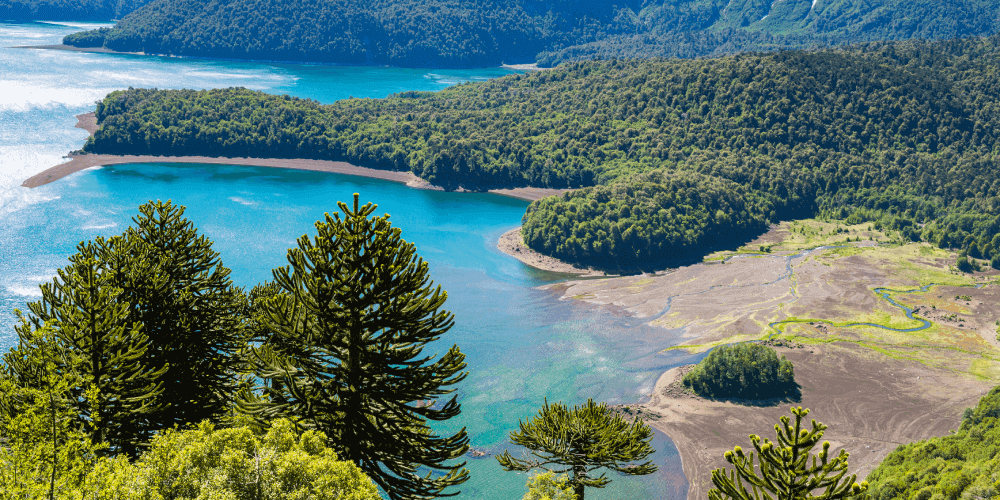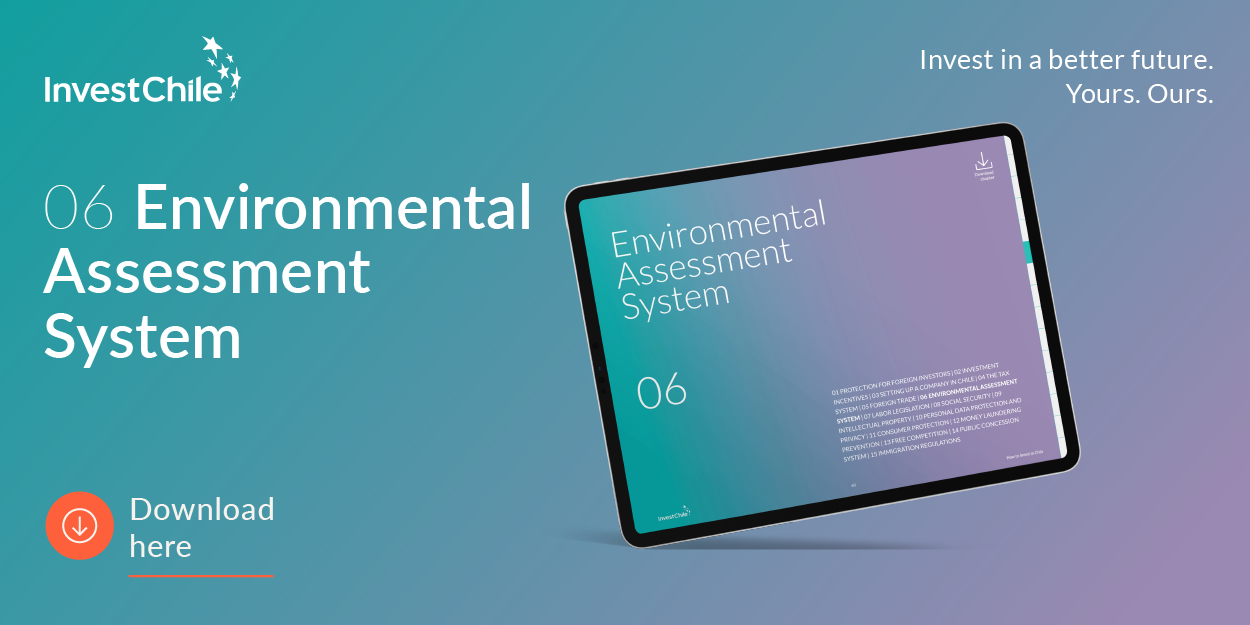Chile’s environmental policy seeks to ensure that economic projects and job creation are compatible with protecting the country’s natural resources, its flora and fauna and the quality of life of its people.

The environmental institutional structure is comprised of the Environmental Assessment Service (SEA), the Superintendency of the Environment, the Environmental Courts, and environmental legislation.
One of the key instruments under Chilean law is the Environmental Impact Assessment System (SEIA), which is managed by the Environmental Assessment Service, to which all projects and activities must be submitted as specified by the Chilean law.
How to submit a project to SEIA's environmental assessment?
The procedure for entering the Environmental Impact Assessment System is initiated at the request of the interested party. Any project or activity capable of causing an impact to the environment, including any modifications, can only be executed or changed following an assessment of its environmental impact.
According to the scale and duration of any potential environmental impact, projects can enter the system through an Environmental Impact Statement (Declaración de Impacto Ambiental or DIA), or through an Environmental Impact Study (Estudio de Impacto Ambiental or EIA).
Environmental Impact Statement
The Environmental Impact Statement is a sworn statement made by the project owner with regards to its plans, and allows the relevant authority to assess whether its environmental impact is in accordance with current environmental regulations.
Environmental Impact Study
The Environmental Impact Study (EIA), consists of a detailed description of the characteristics of the project or activity to be carried out or modified. This must be accompanied by supporting documents that allow for the prediction, identification and interpretation of the project's environmental impact and a description of the mitigation actions that will be adopted to prevent or minimize any significant adverse effects of the project.
The law specifies that the projects or activities listed in article 10 of Law No. 19,300, which generate or present any of the effects listed in article 11 of the same law, mean that an Environmental Impact Study must be prepared if they:
- Present a health risk for the population.
- Imply significant adverse effects on the quantity and quality of renewable natural resources.
- Entail resettlement of human communities, or significant alteration of the life systems and customs of peoples.
- Are locatedin or close to populations, resources and protected areas, conservation priority sites, protected wetlands, glaciers, which are likely to be affected, together with the environmental value of the territory in which the project is intended to be located.
- Entail significant alteration of the landscape or the touristic value of an area.
- Involve alteringmonuments, sites of anthropological, archaeological or historical value and, in general, those belonging to Chile’s cultural heritage.
To find out more about the environmental legislation in Chile, download the chapter of our step-by-step guide for Foreign Investors. Other chapters of the guide also contain useful information about Social Security, Labor Laws and Taxes.



%2017.11.51.png)

